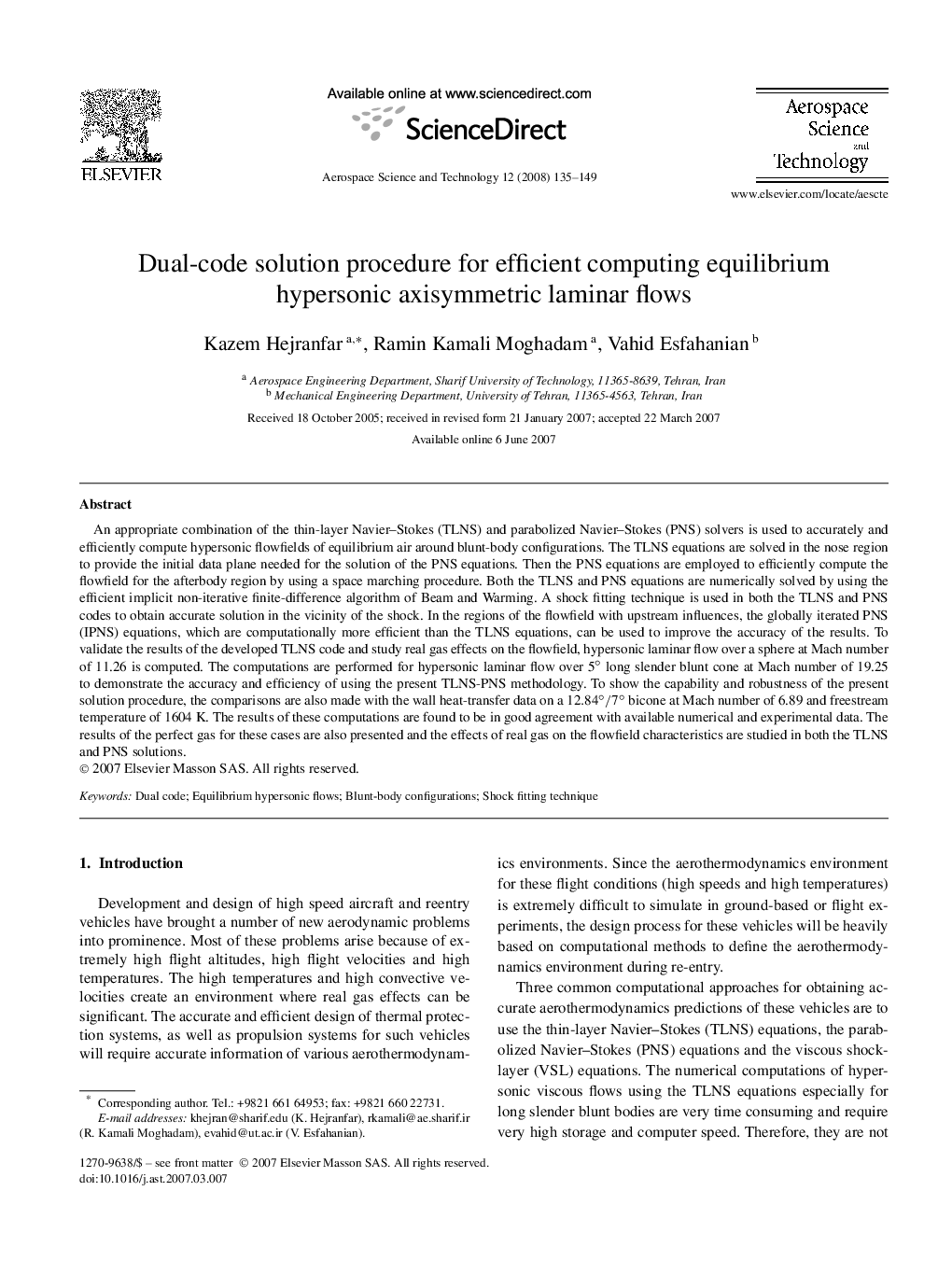| Article ID | Journal | Published Year | Pages | File Type |
|---|---|---|---|---|
| 1718769 | Aerospace Science and Technology | 2008 | 15 Pages |
An appropriate combination of the thin-layer Navier–Stokes (TLNS) and parabolized Navier–Stokes (PNS) solvers is used to accurately and efficiently compute hypersonic flowfields of equilibrium air around blunt-body configurations. The TLNS equations are solved in the nose region to provide the initial data plane needed for the solution of the PNS equations. Then the PNS equations are employed to efficiently compute the flowfield for the afterbody region by using a space marching procedure. Both the TLNS and PNS equations are numerically solved by using the efficient implicit non-iterative finite-difference algorithm of Beam and Warming. A shock fitting technique is used in both the TLNS and PNS codes to obtain accurate solution in the vicinity of the shock. In the regions of the flowfield with upstream influences, the globally iterated PNS (IPNS) equations, which are computationally more efficient than the TLNS equations, can be used to improve the accuracy of the results. To validate the results of the developed TLNS code and study real gas effects on the flowfield, hypersonic laminar flow over a sphere at Mach number of 11.26 is computed. The computations are performed for hypersonic laminar flow over 5° long slender blunt cone at Mach number of 19.25 to demonstrate the accuracy and efficiency of using the present TLNS-PNS methodology. To show the capability and robustness of the present solution procedure, the comparisons are also made with the wall heat-transfer data on a 12.84°/7° bicone at Mach number of 6.89 and freestream temperature of 1604 K. The results of these computations are found to be in good agreement with available numerical and experimental data. The results of the perfect gas for these cases are also presented and the effects of real gas on the flowfield characteristics are studied in both the TLNS and PNS solutions.
